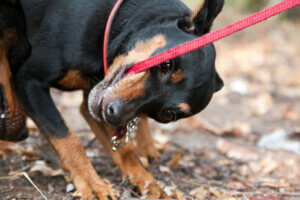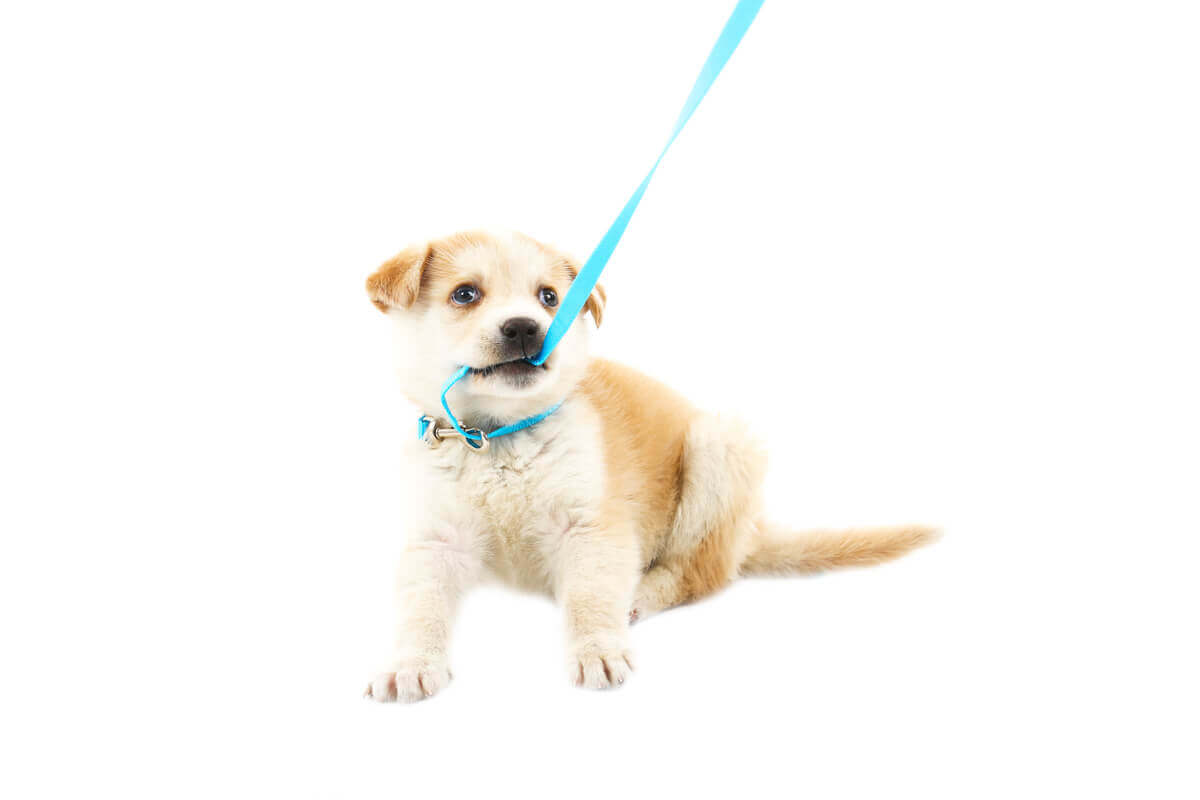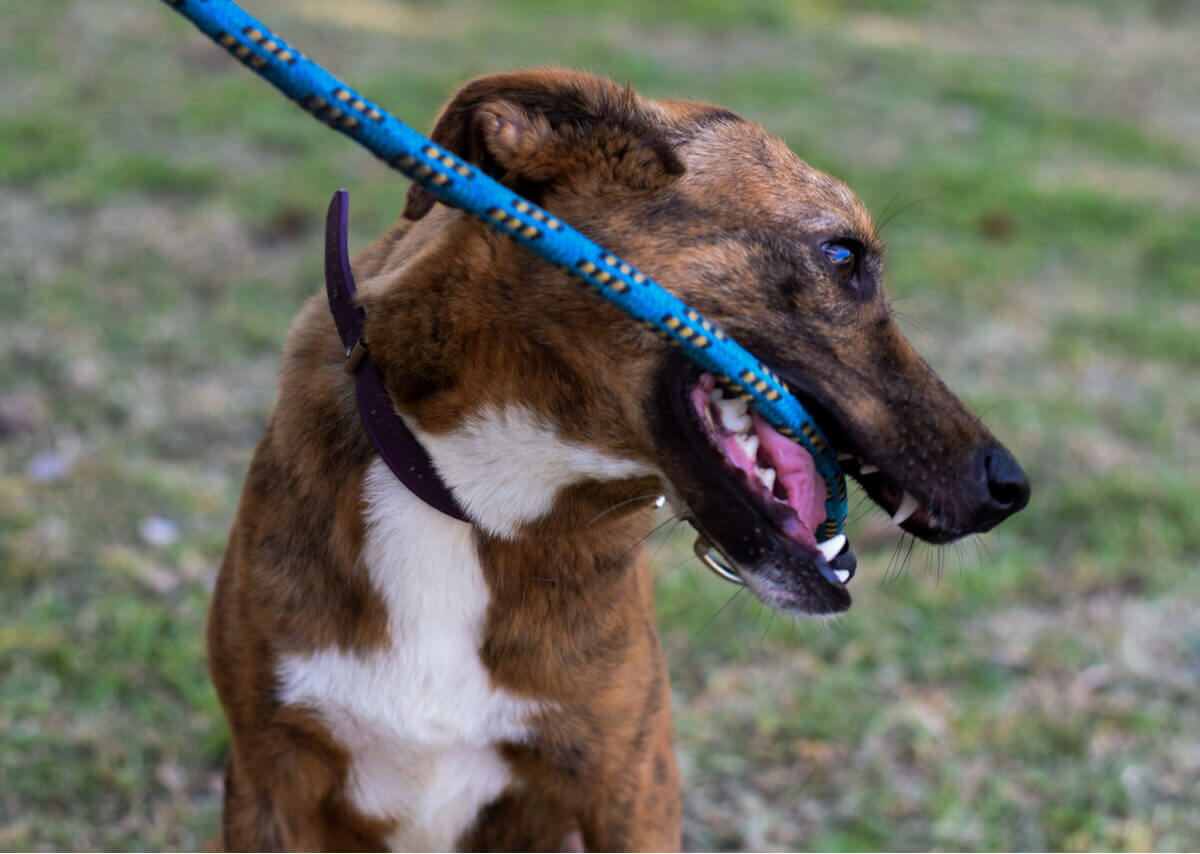What to Do if Your Dog Bites its Leash?


Written and verified by the biologist Ana Díaz Maqueda
When walking your dog, some undesirable behavior is common, such as continuously pulling on the leash or growling at other people or animals. It’s also possible that your dog is one that bites its leash and is unaware of other stimuli.
Perhaps it’s not something your pet does continuously during the whole walk. But if it’s something that your dog does repeatedly on a daily basis, you may find yourself having to buy new leashes on a regular basis. What can you do to prevent a dog from biting its leash? Even though it may seem like an unobtainable goal right now, getting a dog to stop that behavior isn’t all that difficult.
Why does a dog bite its leash?
The fact that a dog bites its leash can mean that it’s over-excited. Instead of taking advantage of the situation to discover and interact with the environment through its nose, many dogs use walks to de-stress and reduce their boredom.
Before going for a walk, a dog should be calm. You can’t achieve this by simply giving orders like “sit” or “stay”. Your dog must learn self-control and understand that, in this state of excitement, you won’t take them out for a walk.
On the other hand, a dog may bite its leash when they want to free themselves and run away. If it feels afraid or that a threat is coming, such as another dog approaching, it may try to bite its leash to avoid the threat if their owner doesn’t understand their feelings and emotions.

When the dog bites its leash due to a state of excitement
Most dogs bite their leash when they leave the house because they’ve been bored for several hours and need to release accumulated stress. Owners should work on these situations from two different perspectives. We’ll show them to you below.
Olfactory work and mental work
As is evident, physical work tires the body, but mental activity can be much more exhausting. Dogs work their minds through their noses. Therefore, if you want to tire your dog out a bit and help it concentrate before a walk, first you must work at home.
Trying out different scent games before going for a walk will make the walk much more comfortable for both you and your dog. In addition, this will make the dog spend more time smelling in the street, focused on olfactory stimuli, and not on biting its leash. This behavior will no longer be as motivating as the world that your animal’s about to discover.
If your dog bites its leash, work on how it leaves your home
After practicing the smell games, your dog should learn how to leave the house. In the past, many claimed that the dog should be the last one to go out the door so that it doesn’t come to believe that it’s the leader. However, specialists in canine psychology have since discarded this theory.
A dog should go out when it wants, before or after you. However, if you want to go out first, train your pet to wait for your call by using a reward system. Even so, the most important thing about this issue is that your dog must control its impulses and energy to want to rush out the door. That’s always the case whether your dog is the first or last to go out the door.
To help your dog control its impulses, you should only put on the leash, harness, or collar when your pet is as calm as possible. Of course, this will depend on its character. If it gets excited, you should wait a little while for the animal to calm down. Scent games and basic commands such as “NO” or “SIT” can be very helpful for this.
Avoid talking continuously during the walk
If, when you walk with your pet, you’re continually giving them orders, they’ll eventually ignore them. You must learn to lead the dog on a leash. Small and gentle redirections will help the dog pay more attention to you when you need it.
On the contrary, if you yell or pull the leash abruptly, then your dog won’t understand anything. Rather, it’ll enter a cycle of stress, bite the leash even more, and perform other undesirable behaviors as well.
The goal is for your dog to show interest in the olfactory stimuli in its environment when it leaves the house. Of course, to do this, you must let it smell things calmly and follow it to the place it needs to smell.
If a dog doesn’t smell during the walk and walks continuously beside you without paying attention to anything, it’ll be an unbalanced dog. Now, this doesn’t mean that you always go where the dog wants, because the dog must learn when it can and when it can’t. However, what you must never forget is that the walk is for your dog, not for you.

All cited sources were thoroughly reviewed by our team to ensure their quality, reliability, currency, and validity. The bibliography of this article was considered reliable and of academic or scientific accuracy.
- Cal, R. (2019). Habla con ellos: educación canina.
- Patricia B. McConnell. (2015) Al otro extremo de la correa. España. Ediciones invisibles.
- Rugaas, T. (2005). El lenguaje de los perros: las señales de calma. hada kaır.
This text is provided for informational purposes only and does not replace consultation with a professional. If in doubt, consult your specialist.